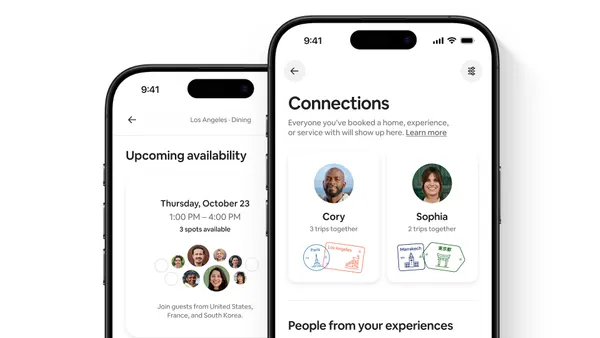Brief:
- Mobile apps are growing their audiences as marketers adapt to the General Data Protection Regulation (GDPR), a stricter data-privacy law that the European Union enacted a year ago. Mobile app audiences rose 17% worldwide in the past year while marketers trimmed their customer lists in more traditional marketing channels like email, per a study that customer engagement firm Airship shared with Mobile Marketer.
- A jump in notifications indicates how dependent marketers have become on mobile platforms to reach target audiences. The average number of mobile notifications received by consumers rose 18% to 36 a month worldwide in the past year. The average notification opt-in rate has steadied at 67% of app users, per Airship. Industries that boosted their notifications the most included finance (up 57%), retail (54%) and media (41%).
- Consumers in the past year were less likely to share their location data in the wake of GDPR's enactment and growing concern over data privacy. The average opt-in rate for use of location data dipped to 7.7% from 9.3% worldwide. However, location data opt-ins in the entertainment (43.1%) and food and drink (161.5%) categories grew sharply on the strength of direct consumer benefits like pre-order and delivery services.
Insight:
Because the EU enacted GDPR to protect its citizens wherever they are in the world, the privacy law has had a strong effect beyond the geographic borders of its member states. GDPR limits how much personal data companies can share without the informed consent of EU consumers. In the year since its enactment, marketers appear to be leaning more heavily on apps that give them greater direct control of the data they collect from users who choose to share that information instead of relying on third-party data.
As consumers install apps from businesses including banks, retailers and entertainment venues, they open the possibility of receiving opt-in notifications. While notifications grew worldwide from a year earlier, Airship observed several geographic differences. Monthly notifications in the Americas grew 22% to an average of almost 37 for each mobile user, followed by 16% growth in Europe to 35. Asia maintained its top spot with an average of 57 notifications sent a month, a 2.5% advance from a year earlier, while Africa showed a steep decline of 33% to about 19 sends a month.
GDPR's biggest effect in the past year is location sharing, as fewer mobile customers allowed businesses to track their whereabouts, although anonymized tracking data can still provide significant personal information about mobile users. While retailers saw a 13% drop in location sharing, it remains the most popular industry for opt-in data among 21% of consumers. That comparably high rate indicates that mobile users are willing to share their location data with retailers that provide a compelling reason to do so, possibly by offering discounts and special promotions when shoppers enter a store or pass by.
The overall dips in location opt-ins were mitigated by the sizable increases in specific industries where consumers see more of a connection between location data and value. The food and drink industry saw a significant jump in location sharing as mobile customers, indicating that the growing popularity of food-delivery apps like DoorDash, Grubhub and Uber Eats are urging people to share their locations for more personalized recommendations. In addition, fast food chains like Burger King and McDonald's have run campaigns that specifically depended on location data to deliver customized offers or food to mobile users.












